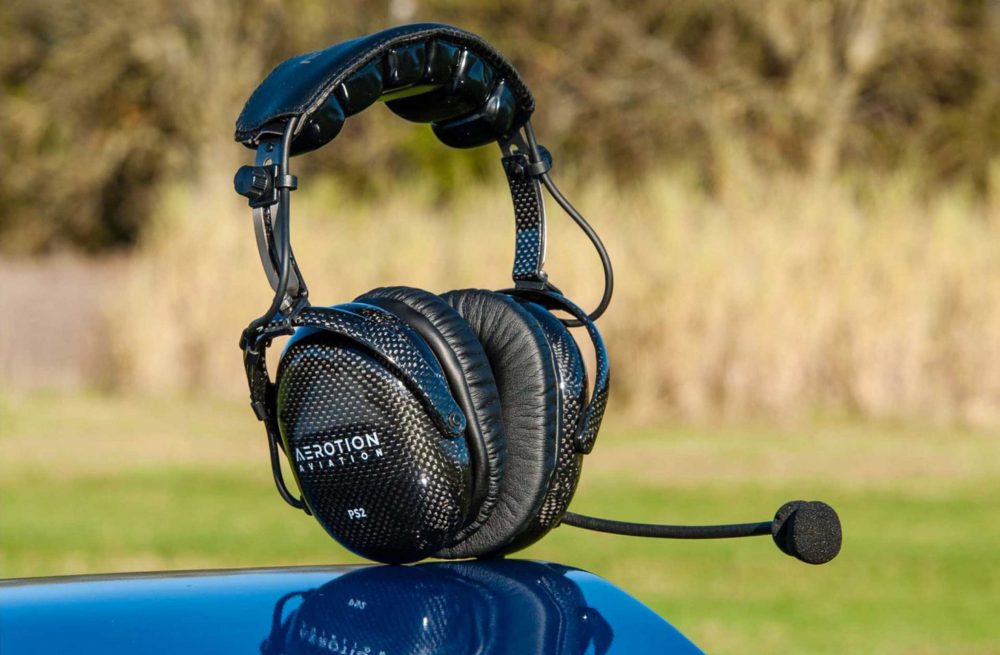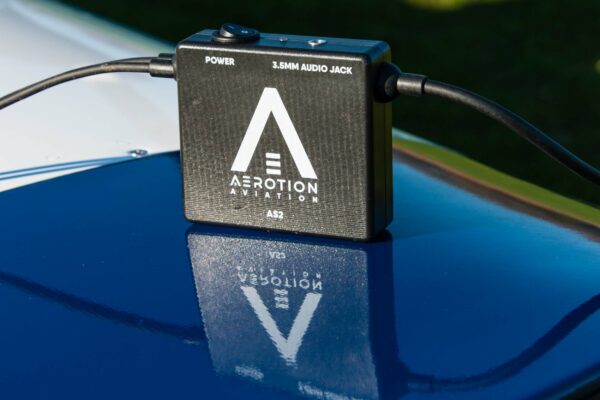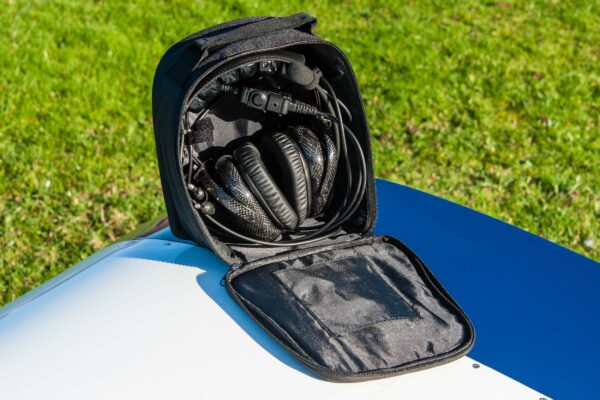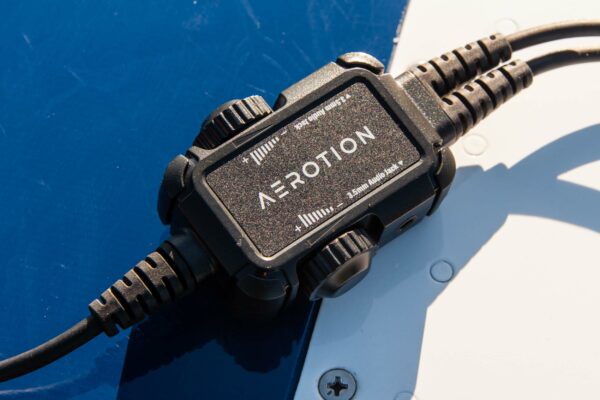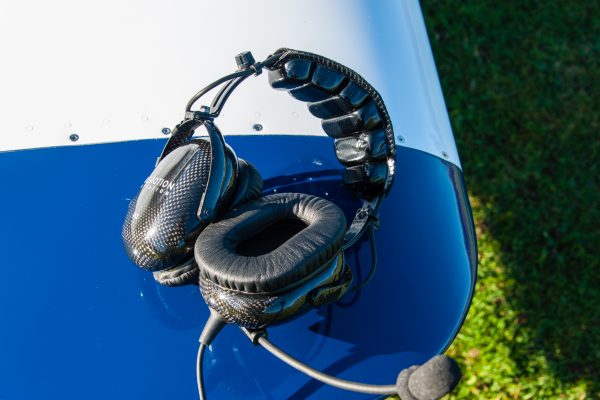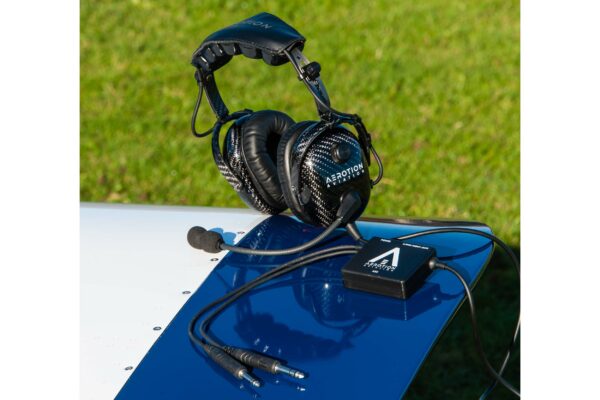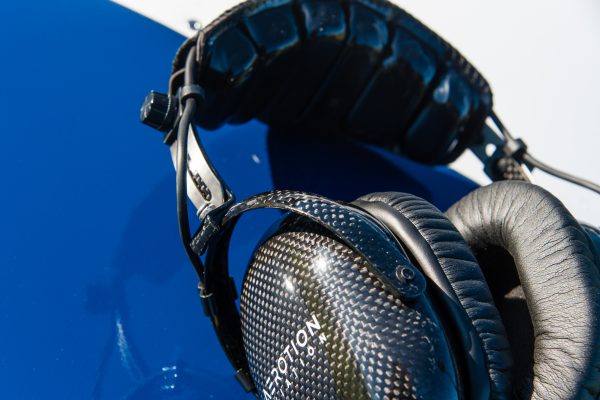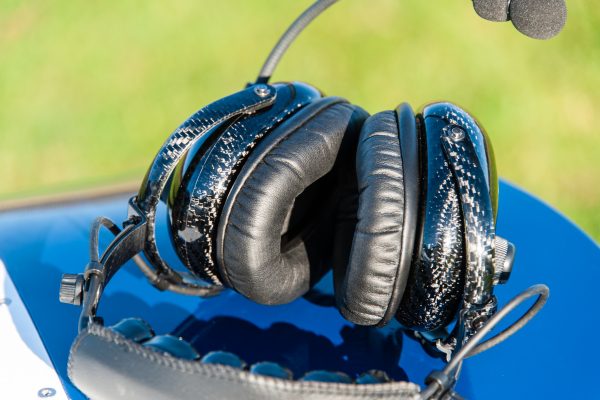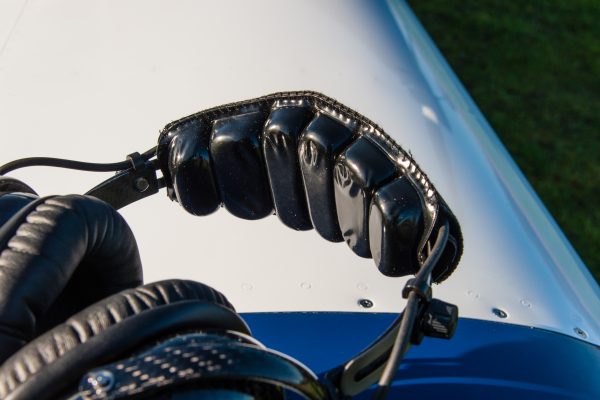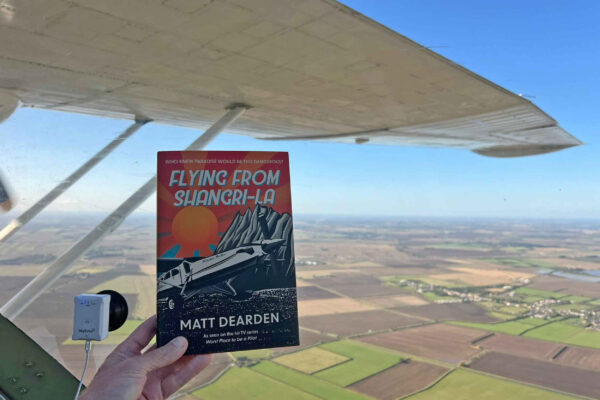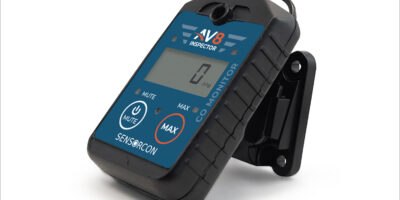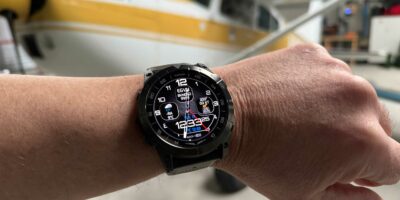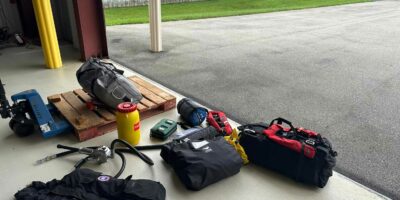Both headsets feature a microphone boom that can fully swivel, meaning you can wear them with the cable/mic boom on the left or right. The AS2 has volume control on the ear cups, while the PS2 has the volume control on a control box. The control box on the PS2 features a screw that adjusts resistance, meaning they should play well with other brands in the cockpit, particularly those that might be green in colour.
Without any ANR circuitry, the PS2 cuts external noise by clamping the ear cups to your head, and given that the two headsets look identical, the AS2 exerts the same amount of force. I did a crude measurement for comparison, so while a Bose A20 applies 756gm of clamping force, the Aerotion headsets apply 1,162gm.
I plugged in the AS2, turned on the ANR and taxied out. You can certainly feel the pressure on your head, and while I imagine it would be OK for an hour or so at a time, I’m not sure that I’d like to be wearing them for a long day of flying. Switching the ANR on and off (a rocker switch on the battery box) shows just what the ANR does, and it certainly makes it considerably quieter, but to be honest I found the sound tinny. It didn’t get in the way of understanding RT but if you happen to be flying a James Brown tribute singer, he’s not going to be impressed!
I switched over to the passive headsets and, blimey, I wasn’t expecting that. I was both impressed and confused. Confused because although I cannot understand why, I thought the sound quality was better and while perhaps not technically as good, it reduced external noise well.
The bottom line is that if I wanted an ANR headset I’d save hard for a top of the range model, but if I wanted a passive headset or two, I’d be more than happy paying out just under £200 for the PS2.
www.aerotion.com


